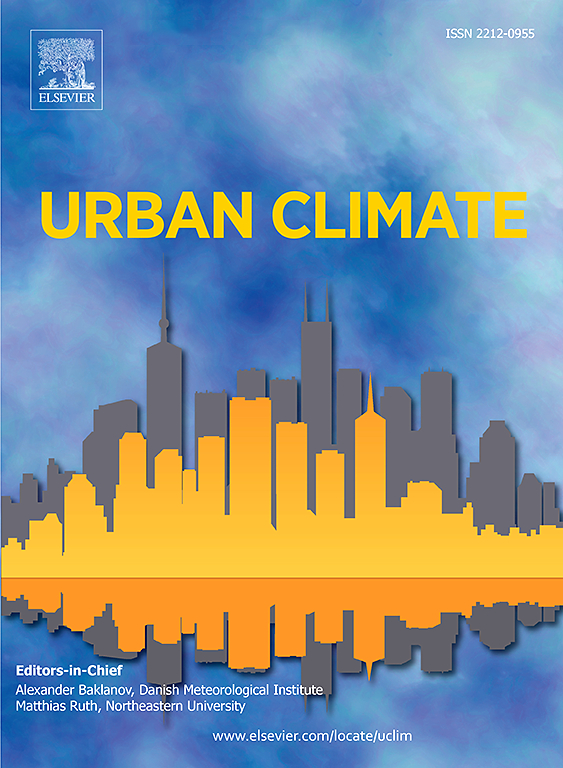Temperature magnitude duration frequency curves to unravel temperature extremes incorporating climate change across India
IF 6.9
2区 工程技术
Q1 ENVIRONMENTAL SCIENCES
引用次数: 0
Abstract
This study demonstrated the utility of temperature magnitude duration frequency (TMDF) curves for quantifying and comparing the risk of extreme temperatures in 41 cities across India, classified under Koppen-Geiger climate zones. Results from all the cities reveal that as the duration of the event increases, there is a decrease in the magnitude of extreme temperature events for the same return period. The spatial mean extreme temperature events were highest for cities in the temperate, dry, and hot summer (Csa) climate zone and lowest in the tropical monsoon (Am) climate zone. The cities falling under the ‘Am’ and ‘Csa’ climate zones depicted an average increase of 4.7 °C and 3.4 °C respectively, for far-future SSP585 climate scenario. The cities under arid, steppe, and hot ‘BSh’, temperate, dry, and hot summer ‘Csa’ and temperate, dry winter, and hot summer ‘Cwa’ climate zones also exhibited extreme temperature events with prolonged duration and increased frequency. A 10-year return period event lasting 10 days shows a significant increase of 0.4 °C to 2.6 °C in the national capital of India, considering far-future climate scenarios. The future climate scenario-based TMDF provide insights to the policymakers and urban planners to target zone-specific mitigation measures against temperature extremes.
温度幅度、持续时间和频率曲线揭示了印度气候变化带来的极端温度
该研究展示了温度幅度持续时间频率(TMDF)曲线在量化和比较印度41个城市极端温度风险方面的效用,这些城市被划分为kopen - geiger气候带。所有城市的结果表明,随着事件持续时间的增加,相同回复期的极端温度事件的强度减小。空间平均极端温度事件以温、干、热夏季(Csa)气候区最多,以热带季风(Am)气候区最少。在遥远未来的SSP585气候情景下,“Am”和“Csa”气候区城市的平均升温幅度分别为4.7°C和3.4°C。在干旱、草原和炎热的“BSh”、温带、干燥和炎热的夏季“Csa”和温带、干燥的冬季和炎热的夏季“Cwa”气候区,城市也出现了极端温度事件,持续时间延长,频率增加。一个持续10天的10年回归期事件表明,考虑到遥远未来的气候情景,印度首都的气温显著上升0.4°C至2.6°C。基于未来气候情景的TMDF为政策制定者和城市规划者提供了见解,以便针对特定区域采取缓解极端温度的措施。
本文章由计算机程序翻译,如有差异,请以英文原文为准。
求助全文
约1分钟内获得全文
求助全文
来源期刊

Urban Climate
Social Sciences-Urban Studies
CiteScore
9.70
自引率
9.40%
发文量
286
期刊介绍:
Urban Climate serves the scientific and decision making communities with the publication of research on theory, science and applications relevant to understanding urban climatic conditions and change in relation to their geography and to demographic, socioeconomic, institutional, technological and environmental dynamics and global change. Targeted towards both disciplinary and interdisciplinary audiences, this journal publishes original research papers, comprehensive review articles, book reviews, and short communications on topics including, but not limited to, the following:
Urban meteorology and climate[...]
Urban environmental pollution[...]
Adaptation to global change[...]
Urban economic and social issues[...]
Research Approaches[...]
 求助内容:
求助内容: 应助结果提醒方式:
应助结果提醒方式:


